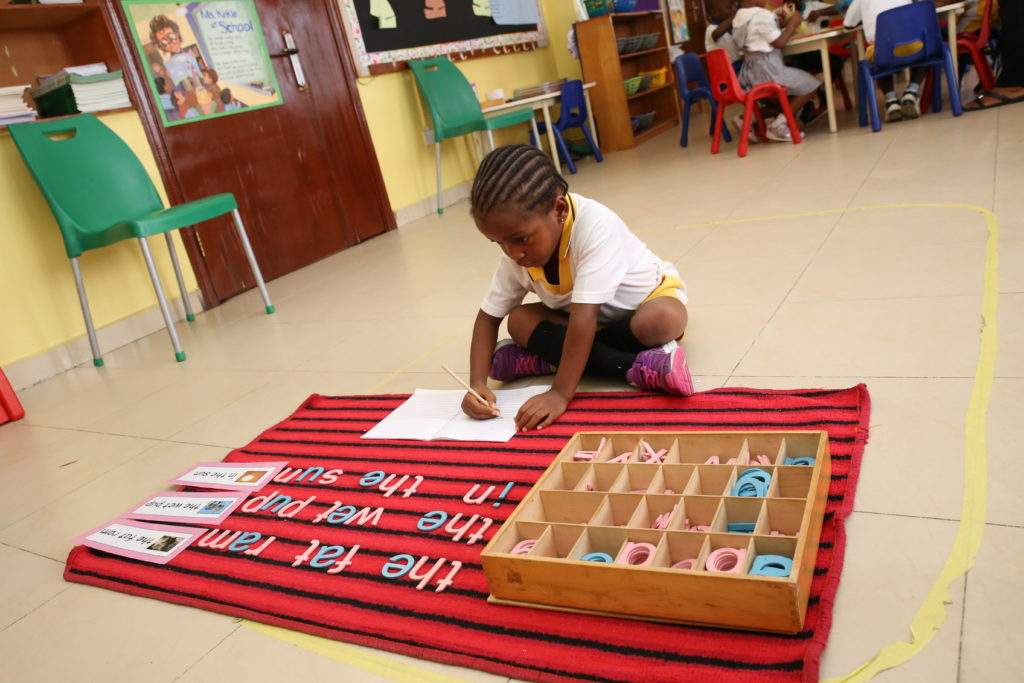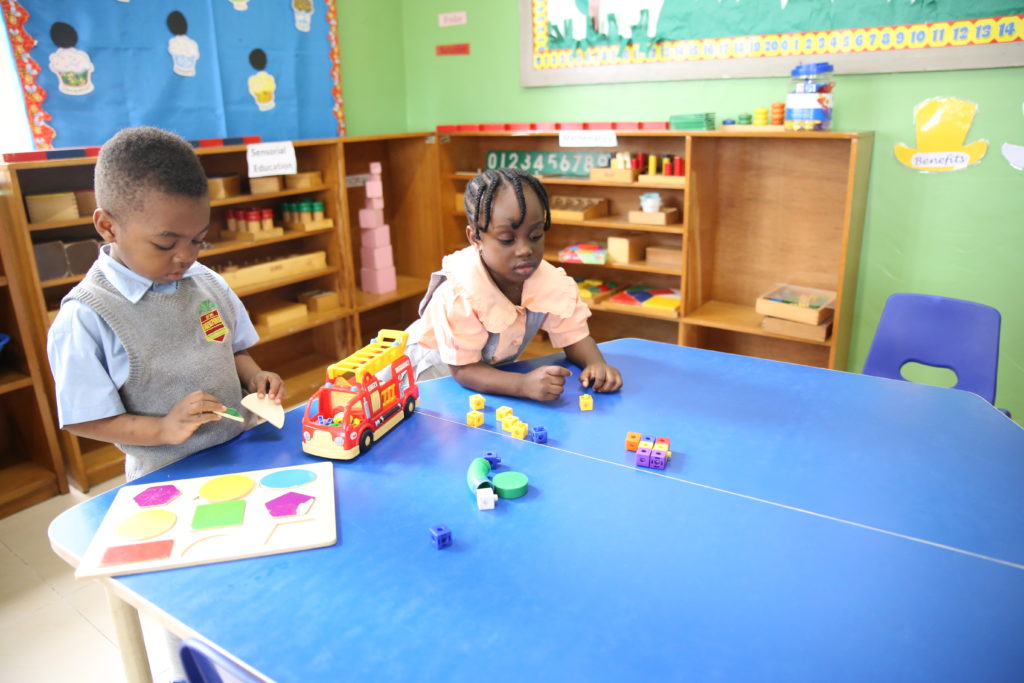Montessori education is an educational approach developed by Italian physician and educator Maria Montessori based on her extensive research with “phrenasthenic” or “special needs” children and characterized by an emphasis on independence, freedom within limits, and respect for a child’s natural psychological, physical, and social development.
Although a range of practices exists under the name “Montessori,” the Association Montessori Internationale (AMI) and the American Montessori Society (AMS) cite these elements as essential:
- Mixed age classrooms, with classrooms for children ages 2½ or 3 to 6 years old by far the most common
- Student choice of activity from within a prescribed range of options
- Uninterrupted blocks of work time, ideally three hours
- A constructivist or “discovery” model, where students learn concepts from working with materials, rather than by direct instruction
- Specialized educational materials developed by Montessori and her collaborators
- Freedom of movement within the classroom
- A trained Montessori teacher
Source: Wikipedia
Here is a video introducing Montessori education
How is it different from other types of education?
In Montessori education, students are allowed to take initiative by themselves while they are just guided by the teacher. It also involves hands-on-learning and collaborative play.
Usually, children are allowed to make choices but, teachers offer age-appropriate activities to guide the process. Children work in groups and also individually to make discoveries about the world and what they are also great at.
Montessori classrooms are designed beautifully in order to meet the needs of children within a particular age range.
Dr Maria Montessori discovered that experiential learning in this type of classroom led to a deeper understanding of language, mathematics, science, music, social interactions and much more. Most Montessori classrooms are secular in nature, although the Montessori educational method can be integrated successfully into a faith-based program.
Everything you see in Montessori classroom is tailored towards creating a match between the child’s natural interests and available activities. Learning is self-paced and children even learn from their own personal experience. The teacher takes note of the child’s natural curiosities. Montessori education answers the question “in what unique way does the child learn?”
Google founders attended Montessori
Montessori Teaching Method: A Brief History
Maria Montessori began to develop her philosophy and methods in 1897, attending courses in pedagogy at the University of Rome and reading the educational theory of the previous two hundred years. In 1907, she opened her first classroom, the Casa dei Bambini, or Children’s House, in a tenement building in Rome.
From the beginning, Montessori based her work on her observations of children and experimentation with the environment, materials, and lessons available to them. She frequently referred to her work as “scientific pedagogy.” In 1901, Maria Montessori met Alice and Leopold (Baron & Baroness) Franchetti of Città di Castello.
They found many matching points between their work. Maria Montessori was invited to hold her first course for teachers and to set up a “Casa dei Bambini” at Villa Montesca the home of the Franchetti’s in Città di Castello. Maria Montessori decided to move to Città di Castello where she lived for 2 years and where she refined her methodology together with Alice Franchetti. In that period, she published her book in Città di Castello, as mentioned before.
The Franchetti Barons financed the publication of the book and the methodology had the name “Method Franchetti-Montessori,” until the fascists ordered to cancel the baroness’ name from the Method because she was Jewish. Alice Franchetti died in 1911 at 37.
Principles for the Montessori Method
According to education.com, there are five underlining principles that accurately describes how Montessori education is implemented.
These principles include:
- respect for the child
- the absorbent mind
- sensitive periods
- the prepared environment
- autoeducation
Respect for the child
Maria Montessori quote explains this:
As a rule, however, we do not respect children. We try to force them to follow us without regard to their special needs. We are overbearing with them, and above all, rude; and then we expect them to be submissive and well-behaved, knowing all the time how strong is their instinct of imitation and how touching their faith in and admiration of us.
They will imitate us in any case. Let us treat them, therefore, with all the kindness which we would wish to help to develop in them (Montessori, 1965).
The Absorbent Mind
Let’s also use this quote to interpret this:
“It may be said that we acquire knowledge by using our minds, but the child absorbs knowledge directly into his psychic life. Simply by continuing to live, the child learns to speak his native tongue” (Montessori, 1966).
Sensitive Periods
Maria’s quote would also explain this:
A sensitive period refers to a special sensibility which a creature acquires in its infantile state, while it is still in a process of evolution. It is a transient disposition and limited to the acquisition of a particular trait. Once this trait or characteristic has been acquired, the special sensibility disappears…(Montessori, 1966).
The Prepared Environment
Montessori believed that children learn best in a prepared environment, a place in which children can do things for themselves. The prepared environment makes learning materials and experiences available to children in an orderly format.
Autoeducation
This is also known as self-education. Montessori believed that children are capable of educating themselves. They need freedom of choice, prepared environment and some guidance.
Montessori Education in Greensprings School
As a school, we have been known for offering the best form of Montessori education. Our preschool is a specially prepared Montessori centre that has all the elements defined by Association Montessori Internationale (AMI) and the American Montessori Society (AMS).


To enrol your child today, get started through this link.

